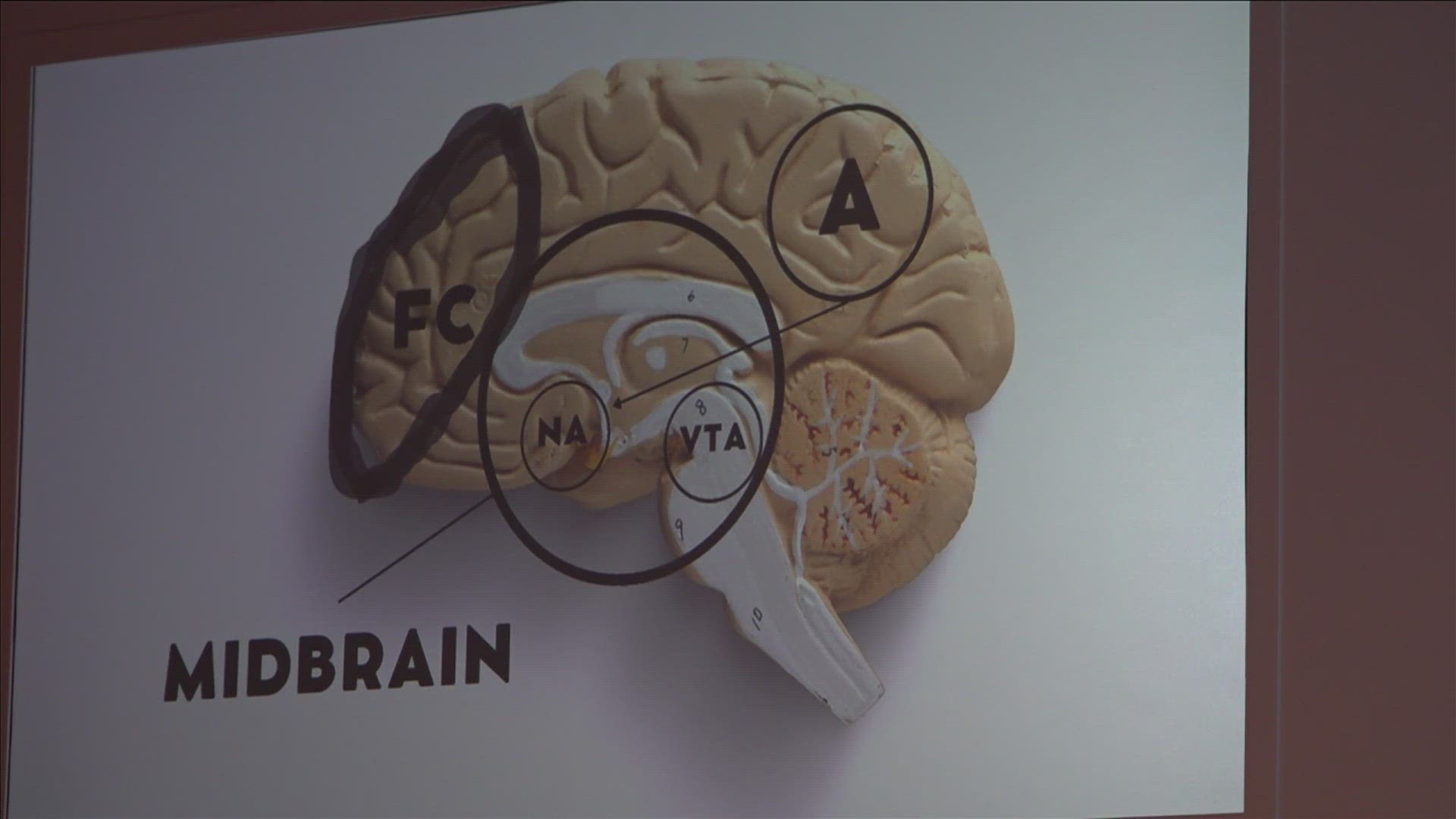MEMPHIS, Tenn — Thursday, Hope Church in Memphis hosted a discussion called “The Addicted Brain,” showing the science behind how drug and alcohol addiction affects the brain.
According to the Tennessee Department of Health, in 2021, 549 people died from an overdose in Shelby County.
Presenter Brett Young hopes that understanding why addiction changes people can provide a path to recovery.
Young said he grew up living the American Dream: growing up in a happy home, becoming a football star and starting a family of his own.
But that changed when he became addicted to painkillers.
“I was already drinking alcohol, and the combination, something changed inside of me,” Young said. “And the captain of the football team became the guy that was screaming at his wife, yelling and having sheriffs tear him from his home.”
After 15 years in recovery, Young has spent the last 14 years helping others on their journey. He is currently the executive director for recovery centers Reprieve for Men and Reprieve for Women.
Young said it is important to understand how drug and alcohol addiction affects the midbrain.
“What we know about the midbrain is, that's where you have your survival instincts,” he said. “And in those instincts, drugs become the priority of survival. And that's why you see the behaviors of addicts and alcoholics.”
Memphis counselor Nina Serman works with patients in recovery and said new information and new perspectives can have a major impact.
“If they know what's going on for them in their brain, that might help them have more hope for long term sobriety,” she said.
Young said sharing this information is not just about giving addicts an excuse for their behavior.
“More to educate people about maybe why they're experiencing different things they are, with an addict, and also to help them see what the solutions are,” he said.
Serman said Young can impact lives just by showing others that they can do it too.
“If they have these models who have gone through years and years of sobriety, then that does also give them a sense that it's possible.”

